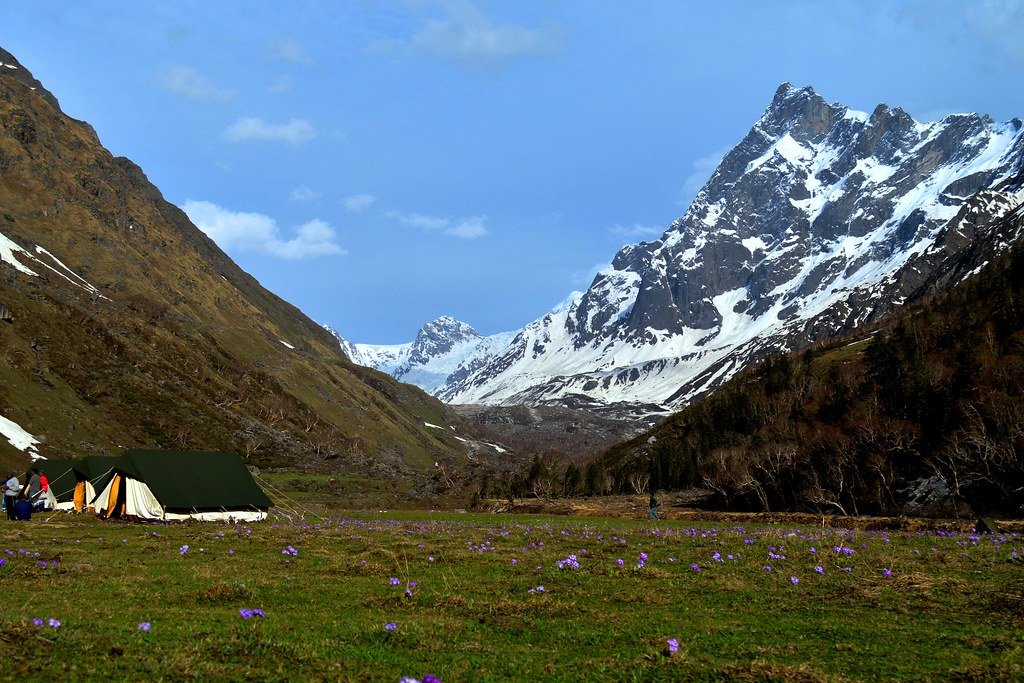Orchha: Unveiling Timeless Wonders | Top 18 Places To Visit In Orchha | How To Reach
Orchha is a historical town located in the Tikamgarh district of Madhya Pradesh, India. Known for its medieval architecture and rich cultural heritage, Orchha was founded in the 16th century by the Bundela Rajput chieftain, Rudra Pratap Singh. The town is situated on the banks of the Betwa River and is famous for its well-preserved palaces, temples, and chhatris (cenotaphs). Orchha served as the capital of the Bundela Rajput Kingdom.
Key attractions in Orchha include the Jehangir Mahal, Raja Mahal, Ram Raja Temple, Chaturbhuj Temple, Lakshmi Narayan Temple, and the riverside chhatris. The town’s historical sites showcase a blend of Rajput and Mughal architectural styles, making it a significant cultural and heritage destination in central India. Orchha’s serene ambiance, coupled with its architectural splendors, attracts tourists seeking a glimpse into India’s royal past.

Places To Visit In Orcha:
Orchha, a picturesque town nestled in the heart of Madhya Pradesh, is a hidden gem that captivates visitors with its rich history, stunning architecture, and serene natural beauty. Steeped in legends and anecdotes, Orchha’s charm lies in its well-preserved medieval architecture, which transports visitors back in time to the grandeur of its glorious past.
Here are some places to visit in Orcha:
1. Orchha fort
Orchha Fort, a captivating historical complex in the heart of Orchha, Madhya Pradesh, India, is a testament to the town’s rich cultural heritage. Built during the 16th and 17th centuries by the Bundela Rajput rulers, the fort stands proudly on an island formed by the confluence of the Betwa River.
The Orchha Fort complex comprises several architectural marvels, including the Jehangir Mahal, Raja Mahal, and Sheesh Mahal. The Jehangir Mahal, a magnificent palace, reflects a blend of Rajput and Mughal architectural styles, showcasing intricate carvings and impressive domes. The Raja Mahal, the royal residence, boasts ornate murals and frescoes that narrate tales of mythological and historical significance.

2. Jahangir Mahal
Jahangir Mahal, an architectural masterpiece nestled within the Orchha Fort complex in Madhya Pradesh, India, is a testament to the grandeur of the Bundela Rajput dynasty. Built in the 17th century by Raja Bir Singh Deo to commemorate the visit of Emperor Jehangir, this palace is a stunning blend of Rajput and Mughal architectural styles. The Jahangir Mahal stands as an imposing three-storied structure adorned with elegant domes, delicate chhatris (umbrella-shaped pavilions), and intricately carved brackets. The palace’s facades showcase detailed ornamentation, reflecting the artistic finesse of the craftsmen of that era. Inside, the palace reveals a series of rooms, galleries, and balconies, each adorned with beautiful frescoes and murals depicting mythological and historical scenes. The central courtyard adds to the charm, creating a harmonious blend of aesthetics and functionality.

3. Raja Mahal
Raja Mahal, a gem within the historic Orchha Fort complex in Madhya Pradesh, India, is a splendid testament to the architectural finesse of the Bundela Rajput rulers. Constructed in the 16th century, this palace served as the royal residence for the Bundela kings.
Raja Mahal stands as a three-storied marvel, blending elements of Rajput and Mughal architecture. The exterior is adorned with ornate carvings, depicting mythological tales, intricate patterns, and religious motifs. The palace’s distinct feature is its unique blend of Hindu and Islamic architectural styles, reflected in the detailed design elements.

4. Ram Raja Temple
Ram Raja Temple, located in Orchha, Madhya Pradesh, India, is a unique and revered religious site with a distinctive history. Built-in the 16th century, this temple is dedicated to Lord Rama and is an essential pilgrimage destination.
What sets Ram Raja Temple apart is its dual role as both a place of worship and a palace. It is the only temple in India where Lord Rama is venerated as a king, and the temple priests are from the erstwhile Raghuvanshi dynasty.
The temple’s architecture combines elements of medieval fortification with ornate spires and domes. The inner sanctum houses the idol of Lord Rama, and the temple complex includes courtyards, halls, and intricately designed corridors.

5. Chaturbhuj Temple
Chaturbhuj Temple, located in Orchha, Madhya Pradesh, India, is a compelling religious structure with significant historical and architectural importance. Erected in the 17th century, the temple is a dedication to Lord Vishnu and is celebrated for its simple yet refined design.
The name “Chaturbhuj” translates to “four-armed,” representing Lord Vishnu’s iconic manifestation. The temple features a distinctive single towering spire, showcasing a fusion of Rajput and Bundela architectural styles. Elaborate carvings and sculptures embellish the temple’s exterior, highlighting the artistic craftsmanship of that era.

6. Lakshmi Narayan Temple
Lakshmi Narayan Temple, situated in Orchha, Madhya Pradesh, India, is a serene and spiritually significant place of worship. Constructed during the 17th century, this temple is dedicated to the Hindu deities Lakshmi and Narayana.
The temple’s architecture reflects a harmonious blend of Rajput and Mughal styles, featuring intricately carved domes and ornate frescoes that adorn its exterior. The interior of Lakshmi Narayan Temple is adorned with vibrant murals and depictions of mythological scenes, showcasing the artistic brilliance of the bygone era.

7. Phool Bagh
Phool Bagh, located in Orchha, Madhya Pradesh, India, is a captivating garden that weaves together history and natural beauty. Built during the 17th century, Phool Bagh served as a formal garden for the Bundela rulers.
The garden is adorned with a network of water channels, fountains, and symmetrical flowerbeds, creating a picturesque landscape. At its center stands the memorial of Maharaja Rudra Pratap, surrounded by elegantly laid-out pathways and lush greenery.
Phool Bagh’s architectural elements include a residential palace, a museum, and other structures that enhance its aesthetic appeal. The garden also houses the popular Rani Mahal, showcasing a blend of Mughal and Rajput architectural styles.

8. Sunder Mahal
Sunder Mahal, situated in Orchha, Madhya Pradesh, India, is a unique blend of Islamic and Rajput architectural styles. Built during the 16th century, this historical monument holds both religious and historical significance.
Legend has it that Sunder Mahal was constructed by Emperor Akbar for his favorite queen, Rai Praveen. However, the palace was later transformed into a place of worship for the followers of the Sufi saint, Hazrat Nizamuddin.
The palace’s architecture showcases intricate carvings, delicate jali work, and distinctive features that reflect the cultural amalgamation of the Mughal and Rajput influences. The interior of Sunder Mahal houses a small shrine dedicated to Hazrat Nizamuddin, attracting both devotees and admirers of historical architecture.

9. Dinman Hardaul Palace
Hardaul, the brother of one of the Kings of Orchha, fell victim to a well-orchestrated conspiracy by the cunning friend of the Mughal king. Doubting Hardaul’s character, the king, influenced by deceit, unwittingly poisoned his brother. Upon discovering the foolishness of his actions and the Mughal king’s conspiracy, the remorseful king created a cemetery in memory of Hardaul. The cemetery holds strong significance among the locals, who worship it and pay tribute to Hardaul’s loyalty. To unravel the complete story of Orchha, attend the Light and Sound show at Orchha Fort.

10. Orchha Wildlife Sanctuary
Orchha Wildlife Sanctuary is located in Madhya Pradesh, India. It is situated on the banks of the river Betwa and river Jamini, and is home to endangered species like tigers and leopards1. The sanctuary is also a haven for bird watchers, with over 200 species of Indian as well as migratory birds1. The sanctuary caters to adrenaline junkies by arranging lots of activities throughout the year, such as river rafting, trekking, canoeing, fishing, camping and trekking1. The sanctuary is open from 9:00 AM to 5:30 PM and the entry fee is INR 40 for Indians and INR 350 for foreigners1. The sanctuary is located at a distance of 4.2 km from Orchha city and 19.2 km from Jhansi.

11. Chhatris (Cenotaphs)
Chhatris, also known as cenotaphs, are architectural structures in Orchha, Madhya Pradesh, India, that serve as memorials for the rulers of the Bundela dynasty. These elevated, dome-shaped pavilions are set along the picturesque banks of the Betwa River, creating a serene and reflective atmosphere. Adorned with intricate carvings and unique architectural features, the Chhatris stand as a testament to the artistic and historical legacy of Orchha. Visitors can explore these monuments, each dedicated to a specific ruler, offering a glimpse into the rich heritage of the region.

12. Betwa River
The Betwa River gracefully meanders through central India, enhancing the scenic beauty of the landscapes it touches. Originating in the Vindhya Range, the river flows through the states of Madhya Pradesh and Uttar Pradesh, eventually joining the Yamuna River. Along its course, the Betwa passes by historic towns and landmarks, including Orchha, where its tranquil banks host the reflection of architectural marvels. Renowned for its cultural and ecological significance, the Betwa River is not only a lifeline for the region but also a source of inspiration for artists and a serene backdrop for those seeking a peaceful retreat.

13. Rani Mahal
Rani Mahal, situated in Orchha, Madhya Pradesh, is a historical marvel that echoes the tales of the region’s royal past. This palace, also known as the Queen’s Palace, exhibits a unique blend of Mughal and Rajput architecture. Adorned with vibrant frescoes and intricate detailing, Rani Mahal stands as a testament to the opulence of the Bundela dynasty. Overlooking the Betwa River, the palace offers a picturesque setting, inviting visitors to step into the bygone era of regal splendor and cultural richness.

14. Sawan Bhadon Mahal
Dauji ki Haveli stands as a splendid testament to the architectural prowess of Orchha’s merchants in Madhya Pradesh. Constructed in the 17th century, this haveli is a remarkable replica of the grand royal palaces, showcasing the sophisticated technology employed by the business class of Orchha. Despite its ruined state and expansive area, the mansion’s architecture mirrors the grandeur of larger havelis, creating the illusion of a miniature Royal Palace. Within its walls, Dauji ki Haveli treasures beautifully preserved murals that have endured the passage of centuries.

17. Ramayana Kala Sangrahalaya Museum
18. Janki Mandir
Best Hotel In Orchha:-
MPT Sheesh Mahal boasts a rating of 8 out of 10 on TripAdvisor, offering a well-received stay in Orchha.







